
JOURNAL OF TOXICOLOGY AND ENVIRONMENTAL HEALTH-PART B-CRITICAL REVIEWS
Scope & Guideline
Advancing understanding in toxicology and environmental health.
Introduction
Aims and Scopes
- Toxicological Impact Assessment:
Focuses on assessing the toxic effects of various environmental contaminants, including chemicals, nano-materials, and particulate matter, on human health and ecological systems. - Environmental Risk Evaluation:
Investigates methodologies for evaluating health risks associated with exposure to environmental pollutants, providing frameworks for decision-making in public health and safety. - Microbiome and Health Interactions:
Explores the relationships between environmental stressors and the microbiome, particularly how these interactions may influence neurological and systemic health outcomes. - Occupational Health Studies:
Reviews the health effects of occupational exposures, including those in high-risk industries like firefighting and manufacturing, emphasizing the need for better protective measures and risk management. - Innovative Therapeutic Approaches:
Investigates novel therapeutic strategies, including the use of nanoformulations and natural products, for mitigating the health effects of toxic exposures and improving treatment outcomes.
Trending and Emerging
- Microplastics and Human Health:
Recent publications are increasingly focusing on the health effects of microplastics, examining their systemic impacts and interactions within biological systems, which is critical given the rising concern over plastic pollution. - Neurotoxicology and Environmental Stressors:
There is a growing emphasis on understanding how environmental stressors, such as air pollution and noise, affect neurological health, signaling an increased awareness of the neurotoxic effects of environmental contaminants. - Innovative Biomonitoring Techniques:
Emerging research is exploring new biomonitoring methods to assess exposure to environmental toxins, particularly in occupational settings, reflecting advancements in analytical technologies and a push for better health surveillance. - Integrative Health Approaches:
The integration of microbiome research with environmental health studies is trending, emphasizing the interconnectedness of gut health and environmental exposures, which may offer new insights into disease prevention. - Systematic Reviews and Meta-Analyses:
An increase in systematic reviews and meta-analyses is evident, showcasing the journal's commitment to synthesizing existing knowledge and providing comprehensive evaluations of health risks associated with various environmental factors.
Declining or Waning
- Traditional Chemical Risk Assessments:
There is a noticeable decrease in publications focusing solely on traditional chemical risk assessments without integrating newer methodologies or environmental considerations, indicating a shift towards more comprehensive, multi-faceted approaches. - Historical Toxicology Studies:
Research that primarily reviews historical data or case studies without applying contemporary analytical techniques or current environmental contexts is becoming less frequent, suggesting a move towards more relevant and innovative research. - Conventional Environmental Monitoring Techniques:
The focus on conventional monitoring techniques for environmental pollutants is declining, with a growing preference for advanced methodologies that incorporate toxicokinetics and effects on biological systems. - Generalized Environmental Health Reviews:
There is a reduction in generalized reviews that do not provide specific insights or novel findings, as the journal's emphasis shifts towards more targeted and detailed assessments of emerging contaminants.
Similar Journals
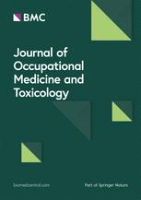
Journal of Occupational Medicine and Toxicology
Empowering research for a healthier workforce.The Journal of Occupational Medicine and Toxicology, published by BMC, is a pivotal open access journal that has been at the forefront of advancing knowledge in the fields of workplace health, environmental safety, and toxicology since its inception in 2006. With a robust impact factor and a distinguished reputation, this journal occupies a significant position in academic rankings, including Q2 in Public Health and Occupational Health, and Q1 in both Safety Research and Toxicology for 2023. Renowned for its rigorous peer-review process, it serves as a vital resource for researchers, professionals, and students aiming to disseminate and access high-quality research and innovative practices in occupational health and toxicological studies. Based in the United Kingdom, the journal prioritizes global access to research, ensuring that critical information reaches a diverse audience, conducive to the advancement of public health and safety. As it converges towards 2024, the journal continues to lead discussions that shape policies and practices related to workforce environments, chemical exposure, and preventative strategies in health management.

Emerging Contaminants
Leading the charge in contaminant research and remediation.Emerging Contaminants is a leading international journal dedicated to the exploration and analysis of novel pollutants, their effects, and the methodologies for their detection and remediation. Published by KEAI PUBLISHING LTD in China, this Open Access journal has been at the forefront of scientific discourse since its inception in 2015, allowing unrestricted access to cutting-edge research. With an impressive categorization in the top Q1 quartile across diverse fields, including Health, Toxicology and Mutagenesis, and Public Health, it ranks remarkably high—41st out of 665 in Public Health and 10th out of 133 in Toxicology according to Scopus metrics, demonstrating its vital role in advancing our understanding of environmental health risks. By bridging the gap between academia and practical applications, Emerging Contaminants not only enriches the scientific community but also serves as an essential resource for policymakers and industry leaders seeking effective solutions to environmental challenges. Researchers, professionals, and students alike are encouraged to engage with the journal’s comprehensive studies and findings, contributing to a sustainable future.

ARCHIVES OF ENVIRONMENTAL CONTAMINATION AND TOXICOLOGY
Fostering dialogue on toxicological effects and solutions.ARCHIVES OF ENVIRONMENTAL CONTAMINATION AND TOXICOLOGY, published by Springer, stands as a leading journal in the field of environmental health and toxicology. With an impressive impact factor, it maintains its stature in the Q1 category for Health, Toxicology and Mutagenesis, Medicine (miscellaneous), and Pollution as of 2023. Since its inception in 1973, this journal has been a crucial platform for disseminating high-quality research that addresses environmental contaminants and their implications on human health and ecosystems. The journal welcomes original articles, review papers, and discussions that deepen our understanding of exposure assessment, bioaccumulation, and toxicological effects of pollutants. While it is not an open-access publication, its commitment to rigorous peer-review ensures that every piece published contributes significantly to the ongoing dialogue within the scientific community. Researchers, professionals, and students engaged in environmental science, toxicology, and public health will find the findings shared in this journal invaluable to their work.

Exposure and Health
Innovating research to inform global health practices.Exposure and Health is a pioneering journal published by Springer, specializing in the interdisciplinary fields of health, toxicology, and environmental sciences. With an ISSN of 2451-9766 and E-ISSN of 2451-9685, this open-access journal exemplifies a commitment to disseminating high-quality research that informs public health practices and policies globally. Situated in the Netherlands, it boasts an impressive impact factor and ranks in the top quartile (Q1) across multiple categories in the 2023 Scopus rankings, including Health, Toxicology and Mutagenesis, Pollution, and Water Science and Technology. The journal is dedicated to advancing knowledge on the interactions between environmental factors and health outcomes, making it a vital resource for researchers, professionals, and students in these critical fields. Exposure and Health actively encourages submissions that address the challenges of exposure assessment, risk management, and the promotion of sustainable public health initiatives.
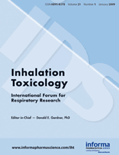
INHALATION TOXICOLOGY
Exploring the Impact of Inhaled Toxins on Health.Inhalation Toxicology, published by Taylor & Francis Ltd, is a premier journal dedicated to advancing the field of toxicology with a particular focus on inhalation exposure and its impact on human health. Established in 1989, this journal provides a vital platform for original research, reviews, and case studies that explore the toxicological effects of inhaled substances, making it essential reading for researchers, health professionals, and regulatory scientists. With an Impact Factor that situates it in the Q3 category in both Health, Toxicology and Mutagenesis, the journal asserts its relevance within the scientific community, particularly emphasizing its contributions as indexed by Scopus rankings in related fields. Although it follows a traditional access model, the journal's commitment to delivering high-quality research continues to foster significant discussions and advancements in understanding inhalation toxicology. For those at the forefront of environmental science and pharmacology, Inhalation Toxicology is an indispensable resource for both current research and future innovations in the discipline.
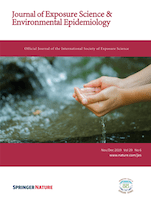
Journal of Exposure Science and Environmental Epidemiology
Innovating Solutions Through Environmental EpidemiologyJournal of Exposure Science and Environmental Epidemiology, published by SPRINGERNATURE in the United Kingdom, is a leading platform for researchers and practitioners dedicated to understanding the interplay between environmental factors and human health. With an impressive impact factor and Q1 and Q2 rankings across multiple categories such as Pollution and Public Health, the journal has established itself as a critical resource in the fields of epidemiology, toxicology, and environmental science. Covering a wide spectrum of studies from 2006 to 2024, it aims to disseminate timely research that empowers professionals and informs policy decisions. Although there is no open access option at this time, the journal's rigorous peer-review process ensures that only high-quality research is published, further cementing its reputation as a vital source of knowledge for advancing public health and environmental protection.
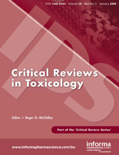
CRITICAL REVIEWS IN TOXICOLOGY
Illuminating the Complexities of Toxicity and Risk AssessmentCRITICAL REVIEWS IN TOXICOLOGY, published by Taylor & Francis Ltd, stands as a preeminent journal within the field of toxicology, boasting an impressive Q1 ranking and holding the distinction of being ranked 12th out of 133 in the toxicology category according to Scopus, placing it in the top 91st percentile. With a continuous publication history since 1971 and a commitment to providing high-quality reviews, the journal offers critical insight into the latest research and advancements in toxicological sciences. While it is not an open-access journal, it provides numerous access options for both subscribers and institutions, ensuring that its extensive articles are widely available to the academic community. The journal's objectives are to disseminate comprehensive reviews that foster understanding and innovation in the assessment of chemical risks, environmental impacts, and the mechanisms of toxicity, making it an invaluable resource for researchers, professionals, and students dedicated to the science of toxicology.
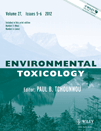
ENVIRONMENTAL TOXICOLOGY
Advancing the Science of Environmental SafetyENVIRONMENTAL TOXICOLOGY, published by Wiley, is a premier academic journal dedicated to the multifaceted study of toxic substances in the environment and their effects on human health and ecosystems. With the ISSN 1520-4081 and E-ISSN 1522-7278, this journal holds a prestigious position in the field, being ranked in the Q1 category across various relevant disciplines, including Health, Toxicology and Mutagenesis, and Management, Monitoring, Policy and Law. The journal regularly publishes high-quality research articles, reviews, and policy discussions aimed at understanding the implications of environmental toxins from 1980 to the present, contributing to the body of knowledge critical for the safety and sustainability of our environment. Researchers and professionals will find a treasure trove of information that not only highlights current trends and methodologies but also sets the stage for future advancements in toxicology. As a key resource, it provides valuable insights necessary for policy-making, environmental management, and public health, reinforcing its significance in the ever-evolving fields of toxicology and environmental science.

JOURNAL OF TOXICOLOGY AND ENVIRONMENTAL HEALTH-PART A-CURRENT ISSUES
Unraveling the Complexities of Toxicology and HealthJOURNAL OF TOXICOLOGY AND ENVIRONMENTAL HEALTH-PART A-CURRENT ISSUES, published by Taylor & Francis Inc, stands as a key resource in the interdisciplinary field of toxicology and environmental health. Operating under the ISSN 1528-7394 and E-ISSN 1087-2620, this journal maintains a strong presence with a Q2 category ranking in Health, Toxicology and Mutagenesis and a Q3 ranking in Toxicology as of 2023. It aims to disseminate critical findings that address contemporary issues in toxicology and environmental health, emphasizing the implications of environmental agents on human health. The journal offers both subscription and open access options, making cutting-edge research accessible to a diverse readership. With coverage of key topics from 1998 to 2024, it is an essential platform for academics, professionals, and students seeking to stay at the forefront of environmental health sciences.
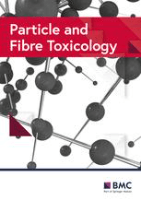
Particle and Fibre Toxicology
Exploring the intricate world of toxicology.Particle and Fibre Toxicology is a leading open-access journal dedicated to advancing the field of toxicology, specifically focusing on the health impacts of particulate matter and fibers. Published by BMC since 2004, this journal operates from its offices in the United Kingdom and has gained significant recognition in the scientific community, achieving an impressive impact factor that highlights its relevance and influence. As indicated by its Q1 ranking in various categories including Health, Toxicology and Mutagenesis and Medicine (miscellaneous), it occupies a prestigious position in the academic landscape, appealing to researchers, professionals, and students alike. With a Scopus ranking of #4 in Toxicology and #7 in Environmental Science, the journal ensures high visibility and accessibility, providing a platform for the dissemination of key research findings and innovative methodologies in the interdisciplinary domains of toxicology. Through its commitment to open access, Particle and Fibre Toxicology fosters knowledge-sharing and collaboration, facilitating significant advancements in our understanding of the toxicological effects of environmental agents.